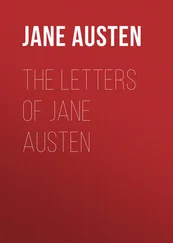John Evelyn - The Diary of John Evelyn (Volume 1 of 2)
Здесь есть возможность читать онлайн «John Evelyn - The Diary of John Evelyn (Volume 1 of 2)» — ознакомительный отрывок электронной книги совершенно бесплатно, а после прочтения отрывка купить полную версию. В некоторых случаях можно слушать аудио, скачать через торрент в формате fb2 и присутствует краткое содержание. Жанр: История, foreign_antique, foreign_prose, на английском языке. Описание произведения, (предисловие) а так же отзывы посетителей доступны на портале библиотеки ЛибКат.
- Название:The Diary of John Evelyn (Volume 1 of 2)
- Автор:
- Жанр:
- Год:неизвестен
- ISBN:нет данных
- Рейтинг книги:3 / 5. Голосов: 1
-
Избранное:Добавить в избранное
- Отзывы:
-
Ваша оценка:
- 60
- 1
- 2
- 3
- 4
- 5
The Diary of John Evelyn (Volume 1 of 2): краткое содержание, описание и аннотация
Предлагаем к чтению аннотацию, описание, краткое содержание или предисловие (зависит от того, что написал сам автор книги «The Diary of John Evelyn (Volume 1 of 2)»). Если вы не нашли необходимую информацию о книге — напишите в комментариях, мы постараемся отыскать её.
The Diary of John Evelyn (Volume 1 of 2) — читать онлайн ознакомительный отрывок
Ниже представлен текст книги, разбитый по страницам. Система сохранения места последней прочитанной страницы, позволяет с удобством читать онлайн бесплатно книгу «The Diary of John Evelyn (Volume 1 of 2)», без необходимости каждый раз заново искать на чём Вы остановились. Поставьте закладку, и сможете в любой момент перейти на страницу, на которой закончили чтение.
Интервал:
Закладка:
Leaving the castle, we passed Mont Louis, a village having no houses above ground but such only as are hewn out of the main rocks of excellent freestone. Here and there the funnel of a chimney appears on the surface among the vineyards which are over them, and in this manner they inhabit the caves, as it were sea-cliffs, on one side of the river for many miles.
TOURS
We now came within sight of Tours, where we were designed for the rest of the time I had resolved to stay in France, the sojournment being so agreeable. Tours is situate on the east side of a hill on the river Loire, having a fair bridge of stone called St. Edme; the streets are very long, straight, spacious, well built, and exceeding clean; the suburbs large and pleasant, joined to the city by another bridge. Both the church and monastery of St. Martin are large, of Gothic building, having four square towers, fair organs, and a stately altar, where they show the bones and ashes of St. Martin, with other relics. The Mall without comparison is the noblest in Europe for length and shade, having seven rows of the tallest and goodliest elms I had ever beheld, the innermost of which do so embrace each other, and at such a height, that nothing can be more solemn and majestical. Here we played a party, or party or two, and then walked about the town walls, built of square stone, filled with earth, and having a moat. No city in France exceeds it in beauty, or delight.
6th May, 1644. We went to St. Gatian, reported to have been built by our countrymen; the dial and clockwork are much esteemed. The church has two handsome towers and spires of stone, and the whole fabric is very noble and venerable. To this joins the palace of the Archbishop, consisting both of old and new building, with many fair rooms, and a fair garden. Here I grew acquainted with one Monsieur Merey, a very good musician. The Archbishop treated me very courteously. We visited divers other churches, chapels, and monasteries for the most part neatly built, and full of pretty paintings, especially the Convent of the Capuchins, which has a prospect over the whole city, and many fair walks.
8th May, 1644. I went to see their manufactures in silk (for in this town they drive a very considerable trade with silk-worms), their pressing and watering the grograms and camlets, with weights of an extraordinary poise, put into a rolling engine. Here I took a master of the language, and studied the tongue very diligently, recreating myself sometimes at the Mall, and sometimes about the town. The house opposite my lodging had been formerly a King's palace; the outside was totally covered with fleur-de-lis, embossed out of the stone. Here Mary de Medicis held her Court, when she was compelled to retire from Paris by the persecution of the great Cardinal.
25th May, 1644. Was the Fête Dieu, and a goodly procession of all the religious orders, the whole streets hung with their best tapestries, and their most precious movables exposed; silks, damasks, velvets, plate, and pictures in abundance; the streets strewed with flowers, and full of pageantry, banners, and bravery.
6th June, 1644. I went by water to visit that goodly and venerable Abbey of Marmoutiers, being one of the greatest in the kingdom; to it is a very ample church of stone, with a very high pyramid. Among other relics the Monks showed us is the Holy Ampoulle, the same with that which sacres their Kings at Rheims, this being the one that anointed Henry IV. Ascending many steps, we went into the Abbot's Palace, where we were showed a vast tun (as big as that at Heidelberg), which they report St. Martin (as I remember) filled from one cluster of grapes growing there.
7th June, 1644. We walked about two miles from the city to an agreeable solitude, called Du Plessis, a house belonging to the King. It has many pretty gardens, full of nightingales; and, in the chapel, lies buried the famous poet, Ronsard.
Returning, we stepped into a Convent of Franciscans, called St. Cosmo, where the cloister is painted with the miracles of their St. Francis à Paula, whose ashes lie in their chapel, with this inscription: " Corpus Sancti Fran. à Paula 1507, 13 Aprilis, concrematur verò ab Hæreticis anno 1562, cujus quidem ossa et cineres hìc jacent ." The tomb has four small pyramids of marble at each corner.
9th June, 1644. I was invited to a vineyard, which was so artificially planted and supported with arched poles, that stooping down one might see from end to end, a very great length, under the vines, the bunches hanging down in abundance.
20th June, 1644. We took horse to see certain natural caves, called Gouttière, near Colombière, where there is a spring within the bowels of the earth, very deep and so excessive cold, that the drops meeting with some lapidescent matter, it converts them into a hard stone, which hangs about it like icicles, having many others in the form of comfitures and sugar plums, as we call them.
Near this, we went under the ground almost two furlongs, lighted with candles, to see the source and spring which serves the whole city, by a passage cut through the main rock of freestone.
28th June, 1644. I went to see the palace and gardens of Chevereux, a sweet place.
30th June, 1644. I walked through the vineyards as far as Roche Corbé, to the ruins of an old and very strong castle, said to have been built by the English, of great height, on the precipice of a dreadful cliff, from whence the country and river yield a most incomparable prospect.
27th July, 1644. I heard excellent music at the Jesuits, who have here a school and convent, but a mean chapel. We have now store of those admirable melons, so much celebrated in France for the best in the kingdom.
1st August, 1644. My valet, one Garro, a Spaniard, born in Biscao, having misbehaved, I was forced to discharge him; he demanded of me (besides his wages) no less than 100 crowns to carry him to his country; refusing to pay it, as no part of our agreement, he had the impudence to arrest me; the next day I was to appear in Court, where both our avocats pleaded before the Lieutenant Civil; but it was so unreasonable a pretense, that the Judge had not patience to hear it out. The Judge immediately acquitted me, after he had reproached the avocat who took part with my servant, he rose from the Bench, and making a courteous excuse to me, that being a stranger I should be so used, he conducted me through the court to the street-door. This varlet afterward threatened to pistol me. The next day, I waited on the Lieutenant, to thank him for his great civility.
18th August, 1644. The Queen of England came to Tours, having newly arrived in France, and going for Paris. She was very nobly received by the people and clergy, who went to meet her with the trained bands. After the harangue, the Archbishop entertained her at his Palace, where I paid my duty to her. The 20th she set forward to Paris.
8th September, 1644. Two of my kinsmen came from Paris to this place, where I settled them in their pension and exercises.
14th September, 1644. We took post for Richelieu, passing by l'Isle Bouchard, a village in the way. The next day, we arrived, and went to see the Cardinal's Palace, near it. The town is built in a low, marshy ground, having a narrow river cut by hand, very even and straight, capable of bringing up a small vessel. It consists of only one considerable street, the houses on both sides (as indeed throughout the town) built exactly uniform, after a modern handsome design. It has a large goodly market house and place, opposite to which is the church built of freestone, having two pyramids of stone, which stand hollow from the towers. The church is well built, and of a well-ordered architecture, within handsomely paved and adorned. To this place belongs an Academy, where, besides the exercise of the horse, arms, dancing, etc., all the sciences are taught in the vulgar French by professors stipendiated by the great Cardinal, who by this, the cheap living there, and divers privileges, not only designed the improvement of the vulgar language, but to draw people and strangers to the town; but since the Cardinal's death, it is thinly inhabited; standing so much out of the way, and in a place not well situated for health, or pleasure. He was allured to build by the name of the place, and an old house there belonging to his ancestors. This pretty town is handsomely walled about and moated, with a kind of slight fortification, two fair gates and drawbridges. Before the gate, toward the palace, is a spacious circle, where the fair is annually kept. About a flight-shot from the town is the Cardinal's house, a princely pile, though on an old design, not altogether Gothic, but mixed, and environed by a clear moat. The rooms are stately, most richly furnished with tissue, damask, arras, and velvet, pictures, statues, vases, and all sorts of antiquities, especially the Cæsars, in oriental alabaster. The long gallery is painted with the famous acts of the Founder; the roof with the life of Julius Cæsar; at the end of it is a cupola, or singing theatre, supported by very stately pillars of black marble. The chapel anciently belonged to the family of the Founder. The court is very ample. The gardens without are very large, and the parterres of excellent embroidery, set with many statues of brass and marble; the groves, meadows, and walks are a real Paradise.
Читать дальшеИнтервал:
Закладка:
Похожие книги на «The Diary of John Evelyn (Volume 1 of 2)»
Представляем Вашему вниманию похожие книги на «The Diary of John Evelyn (Volume 1 of 2)» списком для выбора. Мы отобрали схожую по названию и смыслу литературу в надежде предоставить читателям больше вариантов отыскать новые, интересные, ещё непрочитанные произведения.
Обсуждение, отзывы о книге «The Diary of John Evelyn (Volume 1 of 2)» и просто собственные мнения читателей. Оставьте ваши комментарии, напишите, что Вы думаете о произведении, его смысле или главных героях. Укажите что конкретно понравилось, а что нет, и почему Вы так считаете.












